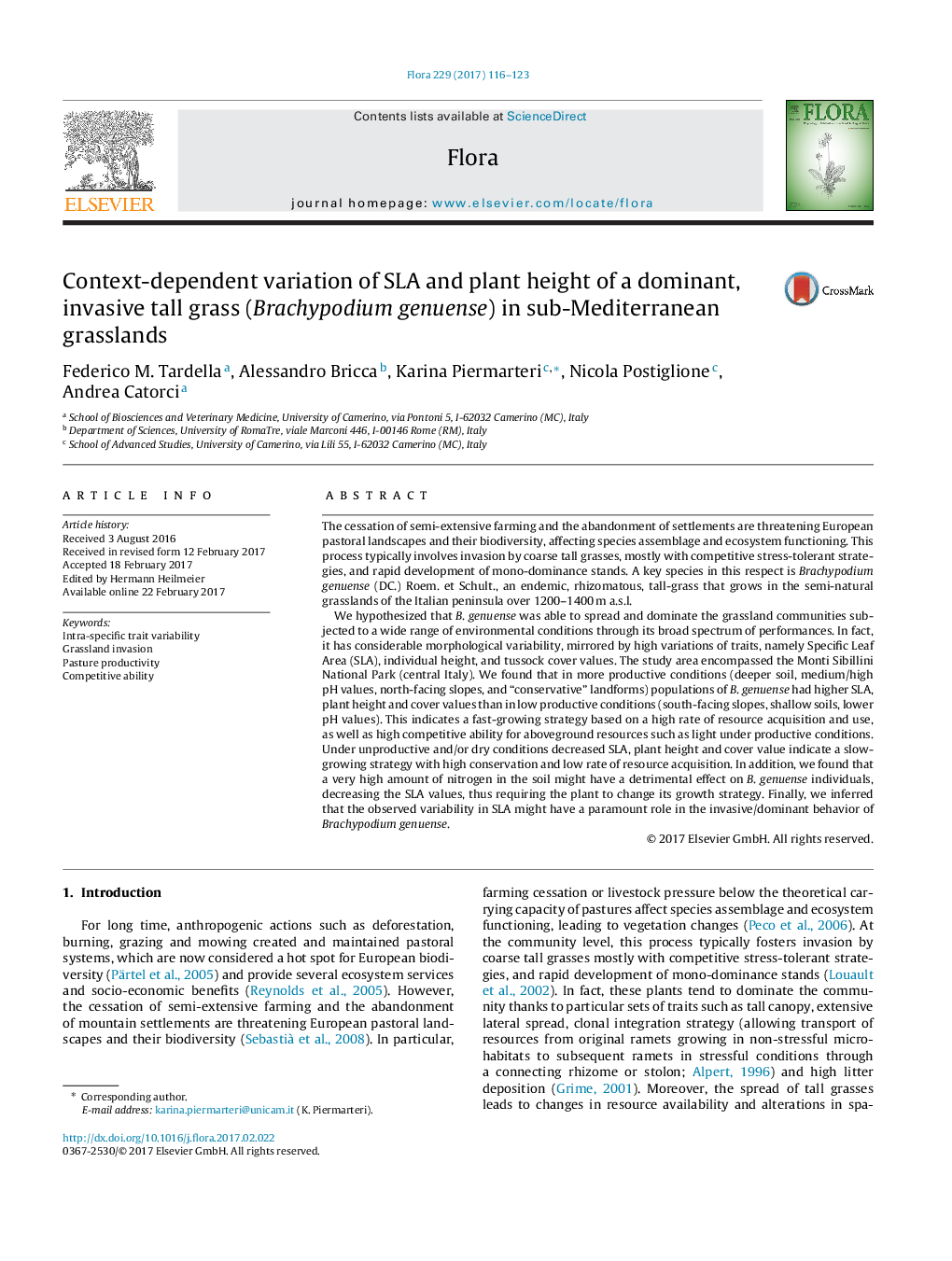| Article ID | Journal | Published Year | Pages | File Type |
|---|---|---|---|---|
| 5532363 | Flora - Morphology, Distribution, Functional Ecology of Plants | 2017 | 8 Pages |
â¢Complex environmental gradients affect intraspecific trait variation of tall grass.â¢SLA varies across a drought/productivity gradient.â¢Environmental factors have interactive effects on SLA values.â¢The invasive behavior of tall grasses is related to the leaves' traits variation.â¢High nitrogen content and low pH value negatively affect SLA.
The cessation of semi-extensive farming and the abandonment of settlements are threatening European pastoral landscapes and their biodiversity, affecting species assemblage and ecosystem functioning. This process typically involves invasion by coarse tall grasses, mostly with competitive stress-tolerant strategies, and rapid development of mono-dominance stands. A key species in this respect is Brachypodium genuense (DC.) Roem. et Schult., an endemic, rhizomatous, tall-grass that grows in the semi-natural grasslands of the Italian peninsula over 1200-1400Â m a.s.l.We hypothesized that B. genuense was able to spread and dominate the grassland communities subjected to a wide range of environmental conditions through its broad spectrum of performances. In fact, it has considerable morphological variability, mirrored by high variations of traits, namely Specific Leaf Area (SLA), individual height, and tussock cover values. The study area encompassed the Monti Sibillini National Park (central Italy). We found that in more productive conditions (deeper soil, medium/high pH values, north-facing slopes, and “conservative” landforms) populations of B. genuense had higher SLA, plant height and cover values than in low productive conditions (south-facing slopes, shallow soils, lower pH values). This indicates a fast-growing strategy based on a high rate of resource acquisition and use, as well as high competitive ability for aboveground resources such as light under productive conditions. Under unproductive and/or dry conditions decreased SLA, plant height and cover value indicate a slow-growing strategy with high conservation and low rate of resource acquisition. In addition, we found that a very high amount of nitrogen in the soil might have a detrimental effect on B. genuense individuals, decreasing the SLA values, thus requiring the plant to change its growth strategy. Finally, we inferred that the observed variability in SLA might have a paramount role in the invasive/dominant behavior of Brachypodium genuense.
